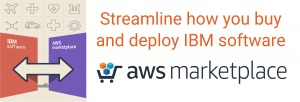From Guest Author Walter van der Heiden
I’m very pleased to share something we’ve been building with Andy Lapping, Technical Fellow at SodiusWillert. Together, as IBM Champions, we’ve spent many years working with and around IBM Rhapsody. Andy knows Rhapsody inside out and has been the brilliant mind behind extensions such as Power Pack and Profile Builder. Now, we’re entering a new phase with an extension that brings AI into the Rhapsody Workflow. Think of this new extension as the extra set of hands every engineer wishes they had. The kind that doesn’t complain about boilerplate diagrams, doesn’t get lost in legacy code, and doesn’t mind pointing out inconsistencies in your models. So, what does it do? A lot! Here are just some examples:
- You can write requirements in plain language, and the AI Modeling Assistant can build you a starting model you can refine.
- It can review designs and give you an overview or highlight where things don’t add up.
- Need to learn a language like SysML? Have AI Modeling Assistant explain a topic by building a model dynamically
- It can help you decrypt that old codebase nobody wants to touch.
Is it a miracle solution? No. Does it replace engineers? Certainly not. But it can give a solid starting point and cut down on laborious, time-consuming work. Let’s dig into all this a bit more in this article.
What is AI Modeling Assistant for IBM Rhapsody? Why Now?

Since the rise of generative artificial intelligence, many Rhapsody users and peers have expressed a wish to see this new technology applied to their daily engineering challenges. We heard them, and AI Modeling Assistant is our answer to this request.
AI Modeling Assistant is an AI helper built directly into your Rhapsody workflow, designed with engineers’ daily work routine and needs in mind. It focuses on areas that consistently slow projects down if they are not carried out with the right resources and tools:
- Creating models from scratch
- Understanding large or undocumented codebases
- Conducting the repetitive grind of checking models for consistency
- Maintaining traceability, more specifically, keeping models, requirements, and tests aligned
AI Modeling Assistant takes on these tasks so engineers can focus their attention on architecture, design choices, and system behavior. So, it’s not about replacing engineering expertise, but about eliminating bottlenecks that waste your time and energy , while allowing you to retain complete control over the engineering process.
Who is it for?
AI Modeling Assistant is built for any IBM Rhapsody users who have to consume, create, or modify models. It provides an initial structure from natural language requirements, generates diagrams and documentation from existing code, and checks models for consistency and traceability.
These capabilities directly support systems and software engineers, who can move from text to structured SysML/UML models.
They also help software engineers working with legacy or undocumented code by producing diagrams and readable documentation.
And test engineers can benefit from AI Modeling Assistant’ s ability to highlight requirement gaps, propose test ideas, and strengthen traceability across models and requirements.
Engineering Managers may not use AI Modeling Assistant hands-on, but they gain from its impact. New team members can, for instance, get up to speed faster, and design reviews become more predictable, thanks to fewer inconsistencies.
In short, if your work sits at the boundary of requirements, models, and code, AI Modeling Assistant is designed with these needs in mind.
Key Scenarios AI Modeling Assistant Supports
1) Building Models from Requirements
AI Modeling Assistant can read your existing requirements documents, even those Word files that linger in project folders, and then build a model from them. It can spot inconsistencies, identify gaps, and even suggest possible test cases based on the requirements. It can trace the model elements to the requirements. The result is a much faster project startup and clearer links between requirements and models.
Link to video: AI Modeling Assistant for IBM Rhapsody | Practical AI in MBE
2) From Natural Language to a Starter Model
You describe the system in plain language. AI Modeling Assistant proposes an initial structure in Rhapsody with classes/blocks relationships, interfaces, use cases, and more. For instance, let’s ask “I need a system that manages user authentication with role-based permissions and audit logging”. AI Modeling Assistant will build a skeleton model. You validate semantics, add behavior, and enforce your rules. The objective here is to replace blank pages with something credible you can shape.
Link to video: AI Modeling Assistant for IBM Rhapsody | Practical AI in MBE
3) Using Existing Models as Context
Sometimes the best way to start a new project is by learning from what already works. Mercury can analyze existing models and use them as reference points for new designs. Understanding context (the structure, relationships, and intent behind a model) helps engineers make informed design choices and encourages model reuse across projects. This approach not only saves time but also promotes consistency and better decision-making in complex engineering environments. Link to video: AI Modeling Assistant for IBM Rhapsody | Practical AI in MBE
4) Reverse Engineering That Explains Code
You point the AI Modeling Assistant to an existing codebase. It generates UML diagrams and documentation, and it can even suggest what the original requirements might have been, based on observed patterns. This is particularly useful for large or undocumented systems where knowledge has been lost over time. Instead of being stuck when key expertise is no longer available (or worse, spending weeks piecing it together by hand), teams get a visual map and supporting documentation. They can rely on it to understand and discuss the system with confidence.
AI Modeling Assistant won’t replace code ownership or eliminate the need for expert review, but it makes the first steps into a legacy system faster and far less risky.
5) Model Review and Correction Assistance
AI Modeling Assistant inspects SysML and UML structures and flags potential inconsistencies. It highlights missing relationships, naming drifts, and elements that appear out of place. You decide what to change. The objective here is clearer review sessions and shorter cycles between finding and fixes.
Link to video: AI Modeling Assistant for IBM Rhapsody | Practical AI in MBE
6) Domain Awareness
AI Modeling Assistant respects stereotypes, semantics, and constraints from industry or custom profiles. It can read existing models or documentation and use it as context for the next piece of work. Generated content aims to align with your engineering context.
Link to video: AI Modeling Assistant for IBM Rhapsody | Practical AI in MBE
7) Learning by Building Models
Not everyone is fluent in SysML or UML from day one. Good news, AI Modeling Assistant can support this learning curve. If you need a concept explained, you can ask AI Modeling Assistant to illustrate it by dynamically creating a model. You see how it looks and behaves directly in Rhapsody, making abstract ideas easier to understand and apply.
The Concrete Benefits of AI Modeling Assistant for IBM Rhapsody
AI Modeling Assistant reduces repetitive work in Rhapsody so engineers can stay focused on design decisions.
Its main benefits are:
- Automated model scaffolding — Generates classes, relationships, and interfaces from requirements instead of creating them manually.
- Faster analysis of legacy systems — Produces UML diagrams and documentation directly from existing code.
- Consistency checks on models — Detects structural or semantic issues before they slow down reviews.
- Traceability support — Establishes and verifies links between requirements, model elements, and code.
- Test Preparation — Suggests test ideas derived from requirements, helping teams plan validation activities earlier.
AI Modeling Assistant won’t handle the hard engineering decisions, but it does take over the routine tasks that consume hours without moving the design forward.
If you want to see how it works on your own model or codebase, contact 321 Gang to schedule a walkthrough or request a demo.
FAQs
Does AI Modeling Assistant intend to replace MBSE and systems engineers? — No. It assists with repetitive tasks. You make the decisions.
How accurate is the generated model? — It is as accurate as the AI you use. Based on our experience, it is a starting point rather than the final product. Expect to refine structure, behavior, and constraints based on your domain rules.
Can AI Modeling Assistant document legacy code well enough to be useful? — It produces diagrams and summaries that improve orientation and discussion. You validate and complete the documentation.
Does AI Modeling Assistant enforce our modeling profiles and standards? — It can read existing profiles, sample models, and existing documentation, and can be prompted to align generated content. You review and approve changes.
What formats and languages are supported? — AI Modeling Assistant supports Rhapsody models and can also read PDFs and JSON files. Other document formats will be added in time.
How is my data processed by AI Modeling Assistant for IBM Rhapsody? — AI Modeling Assistant runs securely inside your environment. It only processes the data you provide, and outputs are transparent and reviewable.
How is AI Modeling Assistant implemented in Rhapsody? — AI Modeling Assistant is delivered as an extension to IBM Rhapsody. Once installed, it integrates directly into the Rhapsody environment so you can use it within your existing workflows, without switching tools.
Is AI Modeling Assistant available for tools other than IBM Rhapsody? — This release targets IBM Rhapsody. We will share updates on broader tool support when available.
Walter is CTO at Willert Software Tools GmbH and gives seminars on the use of UML in the embedded systems environment, development and optimization of runtime systems and frameworks for code generation from UML tools. Walter has developed practical experience in embedded software development in the areas of development of embedded software tools such as compilers, debuggers, RTOS, code generators and UML frameworks, support and sales of software development tools as well as training and technical coaching in embedded SW projects.

321 Gang | 14362 North FLW | Suite 1000 | Scottsdale, AZ 85260 | 877.820.0888

